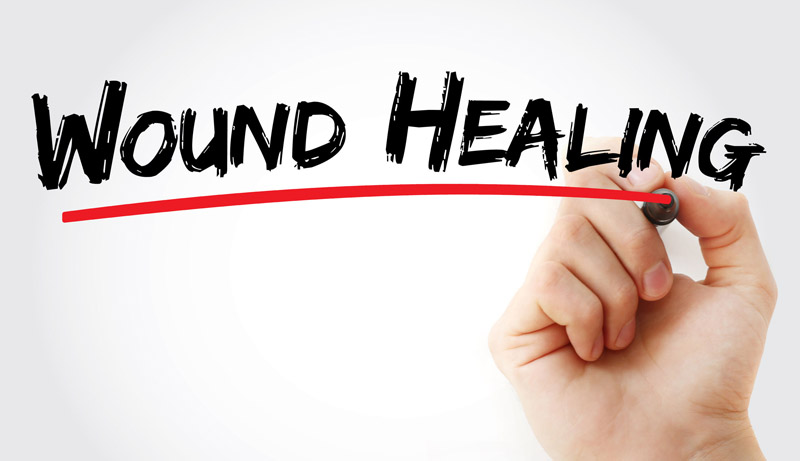
Bruises, burns and wounds are an uncomfortable but unavoidable part of life. For those with diabetes, , those seemingly minor injuries can lead to serious health issues. Many people with diabetes develop wounds that are slow to heal and some never heal completely and may develop an infection.
Jane Weisbecker, the Clinical Manager of Healogics Wound Care at Shore Medical Center said people living with diabetes have an increased risk of lower limb amputation. “Wounds or ulcers that do not heal are the most common cause of amputation,” said Weisbecker. “Other factors such as high blood sugar and smoking can increase the risk of foot-related complications, including amputation and even death, as mortality rates after a lower limb amputation can be as high as 50 percent. Catching the wound early and treating it aggressively can go a long way to avoid this.”
Diabetes causes an impairment in the body’s production of or its sensitivity to insulin, the hormone that allows the cells to take and use glucose from the bloodstream and convert it into energy. When the blood glucose level remains permanently high, it impairs the function of the white blood cells, which help fight off bacteria and close wounds.
Circulation is Key
Poor circulation is a common side effect of diabetes. As circulation slows, blood moves more slowly, making it more difficult for the body to deliver nutrients to wounds. This can result in wounds that heal slowly or not at all.
Neuropathy
Uncontrolled glucose levels can cause neuropathy or damage to the nerves, which results in numbing sensations in limbs. The neuropathy may cause a person who has sustained trauma to their feet to be unaware of their injury which puts them at a significantly higher risk of infection. According to Weisbecker, while legs and feet are most commonly affected, they see wounds from head to toe.
Treating the patient
When a patient has a wound that doesn’t heal, they can get treatment at Shore’s Wound Care Center. During the initial visit, their diabetes diagnosis is confirmed and their A1C and ankle-brachial index (ABI) are checked. The ABI measures the flow of blood to the limbs. The patient and their family are provided detailed diabetic teaching as needed. According to Weisbecker, the wound care team at Healogics comes up with a comprehensive wound care treatment plan for each patient. The patient is seen weekly, photographed and measured and a percentage chart is maintained and followed to ensure progress. Weisbecker added, “If the percentage goal is not reached at certain weekly benchmarks then we re-evaluate the plan of care.”
In addition to weekly appointments at the Wound Care Center, patients may also receive in-home care. Weisbecker said they work closely with homecare who will see the patients twice weekly and report any issues back to Healogics. In turn, Healogics will fax all visits and orders to the home care nurses to ensure continuity of care for each patient.
Products and Treatments
“We use numerous dressings, including collagens, hydrocolloids, and alginates. We use various compressing dressings, negative pressure and enzymatic ointments along with an offloading cast system that keeps the patient's weight off the affected area of the foot,” said Weisbecker. “Weekly wound cleaning, known as debridement, is important and in most cases is done by the physician and usually only requires a topical anesthetic.”
Some wounds benefit from the hyperbaric oxygen therapy chamber. According to Weisbecker, air pressure is increased to three times normal air pressure. She said under oxygen-rich conditions, a patient's lungs can gather more oxygen than would be possible breathing pure oxygen at normal air pressure.
“Your blood carries this oxygen throughout your body. This helps fight bacteria and stimulate the release of substances called growth factors and stem cells, which promote healing. The treatment is done five days a week in a two-hour treatment. The usual course of treatment in the hyperbaric chamber is 5-6 weeks.”
Other wounds treated at Healogics
Healogics treats many conditions including pressure ulcers, venous stasis ulcers, trauma wounds, burns and surgical wounds that may have opened.
When to seek advanced wound care
- You have a wound that has not healed in 30 days - especially important for diabetics
- You have a surgical wound where infection is suspected.
- You have a wound with increasing pain, redness, swelling, foul odor or color change.
To learn more about Healogics Wound Care at Shore Medical Center call 609-653-3500 or 609-653-4526.







